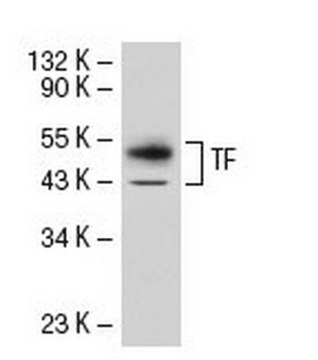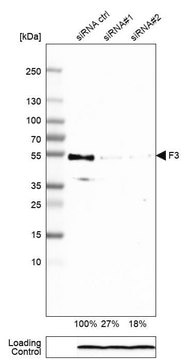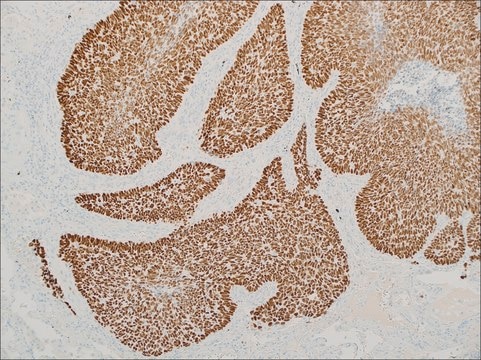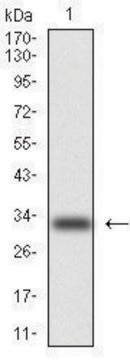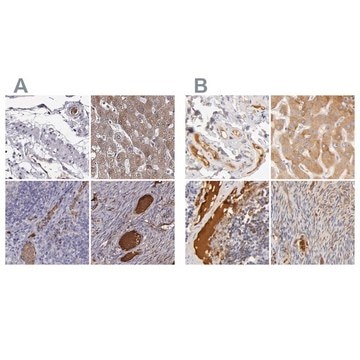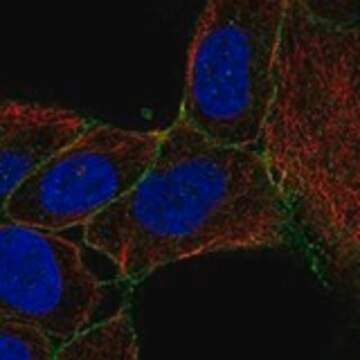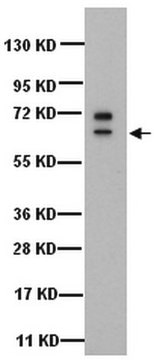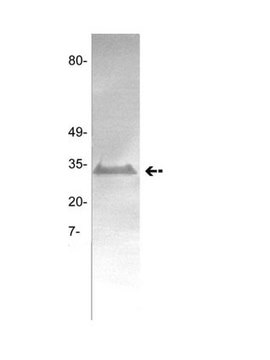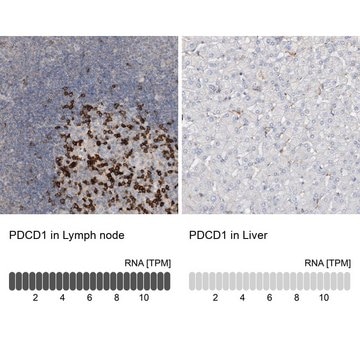General description
We are committed to bringing you greener alternative products, which adhere to one or more of The 12 Principles of Green Chemistry.This antibody is Preservative-free, produced without the harm or sacrifice of animals and exceptionally stable to allow for ambient shipping and storage if needed and thus aligns with "Waste Prevention", "Designing Safer Chemicals" and "Design for Energy Efficiency".
Click here for more information.
ZooMAb® antibodies represent an entirely new generation of recombinant monoclonal antibodies.Each ZooMAb® antibody is manufactured using our proprietary recombinant expression system, purified to homogeneity, and precisely dispensed to produce robust and highly reproducible lot-to-lot consistency. Only top-performing clones are released for use by researchers. Each antibody is validated for high specificity and affinity across multiple applications, including its most commonly used application. ZooMAb® antibodies are reliably available and ready to ship when you need them.
Specificity
Clone 2L10 is a ZooMAb® Rabbit recombinant monoclonal antibody that specifically detects Tissue Factor. It targets an epitope within 24 amino acids from the N-terminal half, extracellular domain.
Immunogen
KLH-conjugated linear peptide corresponding to 24 amino acids from the N-terminal half, extracellular domain of human Tissue Factor.
Application
Quality Control Testing
Evaluated by Western Blotting in A431 cell lysate.
Western Blotting Analysis: A 1:10,000 dilution of this antibody detected Tissue Factor in A431 cell lysate.
Tested applications
Western Blotting Analysis: A 1:1,000 dilution from a representative lot detected Tissue Factor in SKOV3 cell lysate.
Immunocytochemistry Analysis: A 1:100 dilution from a representative lot detected Tissue Factor in HeLa and SH-SY5Y cells.
Affinity Binding Assay: A representative lot of this antibody bound Tissue Factor peptide with a KD of 1.1 x 10-7 in an affinity binding assay.
Immunohistochemistry (Paraffin) Analysis: A 1:100 dilution from a representative lot detected Tissue Factor in human kidney tissue sections.
Note: Actual optimal working dilutions must be determined by end user as specimens, and experimental conditions may vary with the end user
Target description
Tissue factor (UniProt: P13726; also known as TF, Coagulation factor III, Thromboplastin, CD142) is encoded by the F3 gene (Gene ID: 2152) in human. Tissue factor (TF) is an integral membrane protein that serves as a high-affinity receptor and cofactor for factor VII/VIIa. It is expressed on perivascular cells and epithelial cells at organ and body surfaces where it forms a hemostatic barrier. It is also reported to provide hemostatic protection to brain, lung, and heart. In normal healthy individuals, levels of TF are very low. Cell-surface levels of TF do not display any directly correlation with its procoagulant activity indicating that TF exists on the cell surface as dormant (encrypted) and active (de-encrypted) form. This allows for a rapid hemostatic response without a need for transcriptional upregulation of the F3 gene. TF normally exists in a partially encrypted state and its de-encryption on circulating monocytes, platelets or endothelial cells by inflammatory mediators can lead to thrombosis. It initiates blood coagulation by forming a complex with circulating factor VII or VIIa and this complex activates factor IX and X by specific, limited proteolysis. TF expression by nonvascular cells plays an essential role in homeostasis; however, TF expression by vascular cells can induce life-threatening intravascular thrombosis in various diseases, such as sepsis, cancer, and atherosclerosis. Inhibition of TF-Factor VIIa activity is shown to reduce coagulation and mortality in animal models of sepsis. Many cancer cells express large amounts of TF, which contributes to tumor angiogenesis and growth. Cancer cells can release TF-positive microparticles into the circulation that can trigger venous thromboembolism. TF on circulating tumor cells can also coat cells with fibrin that traps them within the microvasculature and promote hematogenous metastasis. This ZooMAbZooMAb® recombinant monoclonal antibody, generated by our propriety technology, offers significantly enhanced specificity, affinity, reproducibility, and stability over conventional monoclonals. (Ref.: Caldwell, JA., et al. (2010). Lab. Invest. 90; 953-962; Kasthuri, RS., et al. (2009). J. Clin. Oncol. 27(29); 4834-4838; Mackman, N. (2004). Arterioscler. Thromb. Vasc. Biol. 24(6);1015-22).
Physical form
Purified recombinant rabbit monoclonal antibody IgG, lyophilized in PBS, 5% Trehalose, normal appearance a coarse or translucent resin. The PBS/trehalose components in the ZooMAb formulation can have the appearance of a semi-solid (bead like gel) after lyophilization. This is a normal phenomenon. Please follow the recommended reconstitution procedure in the data sheet to dissolve the semi-solid, bead-like, gel-appearing material. The resulting antibody solution is completely stable and functional as proven by full functional testing. Contains no biocide or preservatives, such as azide, or any animal by-products. Larger pack sizes provided as multiples of 25 μL.
Reconstitution
300 μg/mL after reconstitution at 25 μL per vial. Please refer to guidance on suggested starting dilutions and/or titers per application and sample type.
Storage and Stability
Recommend storage of lyophilized product at 2-8°C; Before reconstitution, micro-centrifuge vials briefly to spin down material to bottom of the vial; Reconstitute each vial by adding 25 μL of filtered lab grade water or PBS; Reconstituted antibodies can be stored at 2-8°C, or -20°C for long term storage. Avoid repeated freeze-thaws.
Legal Information
ZooMAb is a registered trademark of Merck KGaA, Darmstadt, Germany
Disclaimer
Unless otherwise stated in our catalog or other company documentation accompanying the product(s), our products are intended for research use only and are not to be used for any other purpose, which includes but is not limited to, unauthorized commercial uses, in vitro diagnostic uses, ex vivo or in vivo therapeutic uses or any type of consumption or application to humans or animals.

